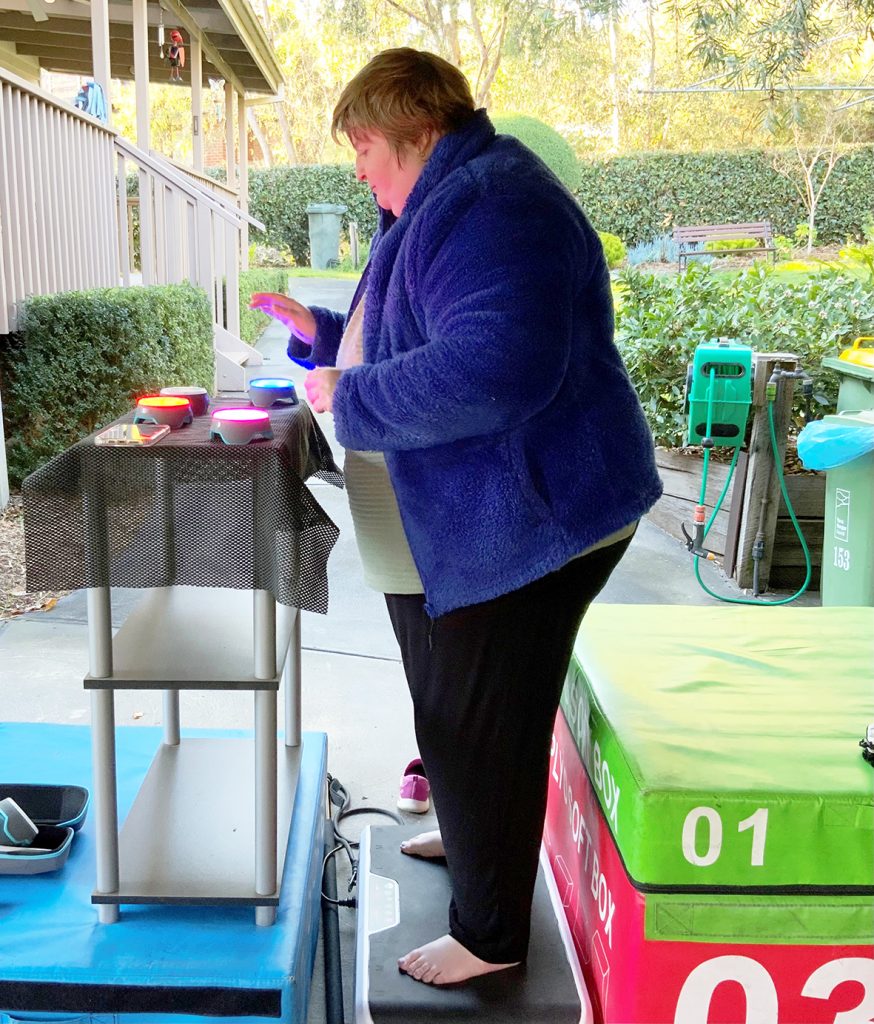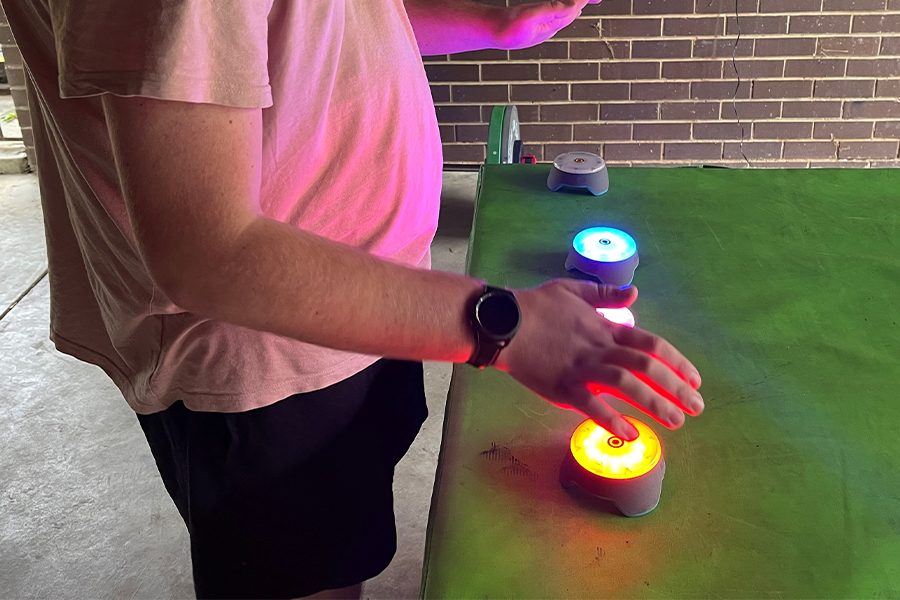One central hallmark of living with a disability is the person’s need to effectively couple perceptual-cognitive skills with their pre-existing motor skills when reacting to the environment’s actions. Helping improve cognitive–muscle function will translate to the increased occurrence of improved motor control, visual attention, visual perception, processing speed, and inhibition control, which correlates well with the prevention of slips, trips, or falls.
Exercising that improves a person’s cognitive–muscle integration is fun, challenging, and rewarding. BlazePod training session requires effective visual scanning (identifying and hitting the target), quick reaction and signal processing (initiating muscle contraction and control for fast limb movement), and inhibition control (shifting one’s body weight to change direction by limiting the number of false hits or mistakes). A good example is a random light training drill which initiates fast thinking, weight transformation, hand-eye coordination, and increased reaction time. It is an excellent example of cognitive-muscle integration. This leads to minor improvements in choice-reaction time and fast decision-making, possibly due to improved muscle activation.
For people with disabilities, BlazePod activities are not only fun but aim to improve upper and lower-extremity motor function by improving choice-reaction time which would, for instance, be of value for the correct selection when it comes to stepping over objects, ascending stairs, or the initiation of weight transformation during the walking cycle.
Thanks for reading. And stay tuned for next month’s blog when I introduce exercises that will help improve the quality of life for people with disabilities.
CG.
References
Reve, E. v., & Bruin, E. D. (2014). Strength-balance supplemented with computerized cognitive training to improve dual task gait and divided attention in older adults: a multicenter randomized controlled trial. BMC Geriatrics, 1-33.
Shields, N., Taylor, N. F., & Fernhall, B. (2010). A study protocol of a randomized controlled trial to investigate if a community-based strength training program improves work task performance in young adults with Down Syndrome. BMC Pediatrics, 1-7.
Wilke , J., & Vogel, O. (2020). Computerized Cognitive Training with Minimal Motor Component Improves Lower Limb Choice-Reaction Time. Journal of Sports Science and Medicine, 529-534.



